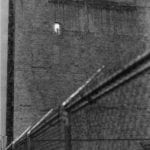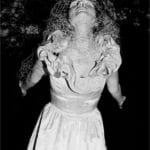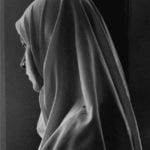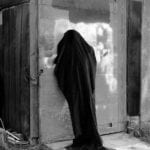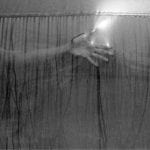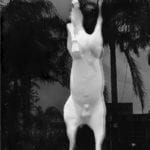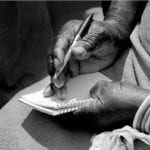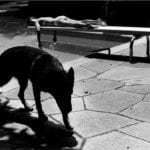November 2012
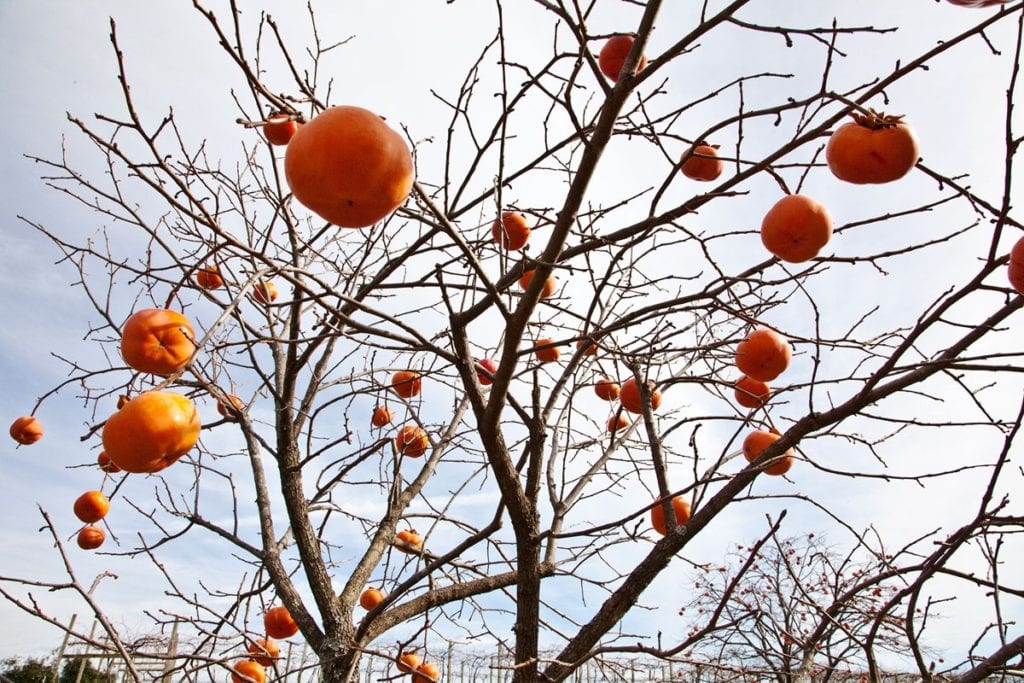
Artist’s Statement
Around two years ago when I was at a wine tasting in Tiger, Georgia I saw Bob Hatcher, who asked me what I was up to. I told him I was about to have a show in La Grange called All About Trees. He said, “Come, come with me, I’d like to show you the Alle of trees I have just planted on our property around a pond.” I saw the lotus pond and asked if I could come back and photograph. Once I got back there I was like a dog with a bone. I wouldn’t let go. The Chinese ancients tell us, “Perseverance brings good fortune.” These black and white prints found their way into the tree show by being called Want to be Trees, and they were a hit.
The tree theme came about because I had shot so many trees throughout my years as a photographer. The first thing I do every morning is walk my dogs on my mile-long trail in the woods along a creek. When I was invited to have the show All about Trees, I went on some road trips to take more pictures, while I was still shooting black-and-white film. (I have since switched to a digital camera.) I have continued to shoot at Hatcher’s Pond even after this show opened. In fact, I took an out-of-town friend there on a rainy day. Each time I approach the pond I worry that there is nothing there anymore, but that day in the rain, the raindrops on the water were spectacular. However, when I was reviewing the pictures in my camera it went blank. My friend said, “Rice.” We stopped and bought rice (as a moisture-absorbing agent) and put the camera in a baggie. In 24 hours it came back to life. Good to know!
While I was still photographing at Hatcher’s Pond I went to the Galapagos Islands and merged the sky, trees, and water into one image. These photos have similar elements that occur in the Hatcher’s Pond photographs; I even titled that body of work Earth, Sky, and Water, without even making the connection. I was exploring color and light relationships in the Galapagos Islands at the same time I continued looking at Hatcher’s Pond in color.
Very recently I discovered that I don’t have to travel halfway around the world to be inspired! I have lived in the same house for 50 years and have walked past a spot filled with trees across the road countless times, but never saw the potential to make meaningful photos there. I was so excited when I realized that I had made these tree reflections in water so much like Hatcher’s Pond.
A week or so after shooting that photograph across the road, I was visiting in Mexico where I shot a friend’s wedding. I went on a road trip to a nearby location and made these recent images. With this work, the merging of foreground, middle ground, and background coming into one continuous space, along with the optical movement around and through the picture plane, continues an approach that I see somehow related to my other work, expressed fully in the Hatcher’s Pond exhibition.
The way my eye has been developing, I see things differently now. As a general rule, I shoot intuitively and analyze connections later. I have always believed that if you don’t live on the edge you are taking up too much space. At Hatcher’s Pond, I realized I was standing on the edge and seeing things I hadn’t seen before, so I started coming back as often as I could, to see the pond during different seasons, times of day, weather, and light conditions.
When the first winter season came I got really excited by the many possibilities, and started to see more and more patterns, and feel the meditative pull. I tried to keep my mind and eye open to things I didn’t recognize, and allow the camera and lens to show me things. I let go of my preconceptions of nature and the rhythms started to flow. Being stuck with what you know often keeps you from seeing what you don’t know. One must use intuition with no premeditation in order for the spontaneity of chance to take over, which is the keystone of my best work. The landscape of the dead lotus plants opened up chance sightings, and invited new discoveries every time I redirected my camera. I was distracted from the original purpose of the plants and the pond, and simply focused on the abstract images that were being revealed to me.
During my second winter I went when it was 17 degrees. It was bone cold. The water was frozen and so was I, but I was determined not to think about that and to make new images. One afternoon Maggie and Bob Hatcher came down to chat with me, and I continued shooting as the light was going fast. When I looked at the proofs later with artist John Dean, my printer, he said he noticed that I had lost my concentration between the penultimate frame and the last frame I took while talking to them. That made me realize that when I was concentrating I was in a complete meditative state, probably in the same state of mind that the artist Don Cooper is in when he is making his “pindu” circles and gets lost in the process.
In 1940 Mark Rothko stopped painting recognizable images because he wanted to create a new language that did not refer either to myth or reality. He saw memory, history, and geometry as obstacles. He started using watercolors hoping the shimmering pulsating color would project and recede in space, creating abstract fields of color for the viewer’s contemplation. I hope that the transparency of my images of the lotus stalks and pods reflecting in the water, along with the earth and sky, will give the viewer an emotional jolt. It’s like plumbing the depths, looking for worlds beneath the surface, as the camera shows what the naked eye doesn’t always see. By printing these images in a very large scale, they take on a calligraphic style of graffiti somewhat reminiscent of American artist Cy Twombly’s large paintings, where he was blurring the line between abstract and representational imagery.
I have been photographing all over the world for 40 years, and doing unconventional work that began with training from my esteemed teacher, Minor White. I spent many years making exciting and unique images using all kinds of magical techniques in the darkroom. At some point I realized that it was more difficult and more fun to find actual images that sparked my imagination. At Hatcher’s Pond, the reflections of the stalks and pods, sometimes looking like dancing figures and other times like musical scores, is the culmination of all of my photographic desires in one of the richest and most exciting places I’ve found. I think it takes a long time to let go of what you know and allow yourself to probe the unknown until you come up with a whole new vocabulary, and new ways of seeing things. Rothko talked about always wanting to go one step further, so he virtually made the same vertical painting over and over again, hoping the light or color fields would be just different enough to make the next one his best. That’s the same impulse that keeps me returning to Hatcher’s Pond. Every time I go there, I am experimenting with what nature has left behind. Each photograph represents a connection to the whole scene with the layers between earth, sky and water.
I am not attempting to represent reality. The creation of these photographs is both meditative and ritualistic as I move around with my camera, trying to get in closer and closer to the abstract forms that I find so amazing. By the end of his life, Claude Monet had hardly touched the surface of continuous discovery, and I feel that I have just scratched the surface of this little piece of nature that has been so giving to me. I get excited every time I go to the pond, and I never dreamt that this work would lead to the opportunity of an exhibition at the Museum of Contemporary Art of Georgia. The vision was to just show linear images, very large and with lots of breathing space in between each one. According to Jeffery Fraenkel, in his new book Furthermore, he says, “The essence of photography remains inexplicable and retains an almost voodoo-like element of magic.”
Biography
Lucinda Weil Bunnen is a practicing artist and photographer living in Atlanta, Georgia. She has traveled worldwide for her work and has had numerous one- and two-person shows throughout the Southeast. She has also participated in many national, international, and regional juried shows, including Atlanta Artists in Buenos Aires in Argentina; Atlanta in France in Toulouse; and France; and New Southern Photography: Between Myth and Reality at the Burden Gallery in New York City.
Lucinda has been a part of several multi-media exhibitions as well as the subject of a video and the producer of a video. Her work has been reviewed in The Atlanta Journal-Constitution, Atlanta Magazine, The New York Times, The Los Angeles Times, and other publications. She has also co-authored three books: Movers and Shakers in Georgia, 1978; Scoring in Heaven, Gravestones and Cemetery Art in The American Sunbelt States, 1990; and ALASKA Trails Tales and Eccentric Detours, 1992. Lucinda won the “Women in the Visual Arts” Award in 1997, and has been listed in Whoʼs Who in American Art since 1975.
In the fall of 2009 she had shows in Atlanta and Madison, Georgia. Her work can be found in numerous public collections including the Museum of Modern Art and The Whitney Museum of American Art in New York; the Pushkin Museum in Moscow; The Smithsonian in Washington, D.C.; The Mint Museum in Charlotte, North Carolina; The Chrysler Museum in Norfolk, Virginia; The National Museum of Women in the Arts in Washington, D.C.; and the The High Museum in Atlanta. She has lectured, given workshops and curated exhibitions across the Southeast United States. She was both donor and curator of Subjective Vision: the Lucinda W. Bunnen Collection of Photographs, a collection of contemporary photographs assembled for Atlantaʼs High Museum.
Jerry Atnip
Jerry Atnip has a 38-year career as a commercial and fine art photographer. His images have been published in 40 countries, and since 2003, he’s held over 75 exhibitions and been presented with over 90 awards. He is also a teacher, workshop director, curator, juror, frequent lecturer and serves on the boards of several Arts &
Photography organizations, including Atlanta Celebrates Photography festival and Slow Exposures Photofestival. His work has been collected by museums, corporate and private collectors and he is an Exhibiting Member of The National Arts Club in New York.


